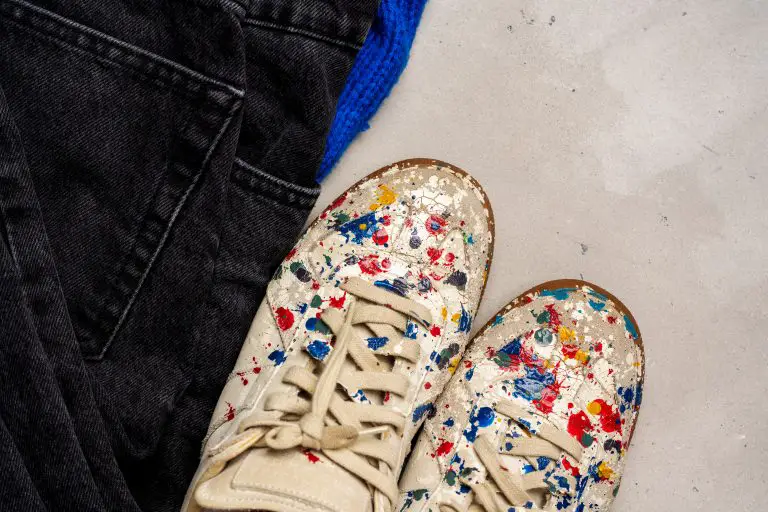Leather is a timeless material known for its durability and elegance. However, when faced with unfortunate accidents, such as paint spillage, it can be disheartening. Removing paint from leather requires specialized techniques tailored to preserve the integrity of the material while effectively eliminating the unwanted pigment. This guide will elaborate on various methods to remove paint from leather, the types of paint involved, and precautions to take during the process.
Understanding the type of paint is paramount. Different paints have distinctive compositions and removal methodologies. Acquainting yourself with the specific paint type can significantly influence the success of your removal effort.
Types of Paint
There are primarily two categories of paint that may stain leather: water-based paint and oil-based paint. Water-based paints, such as acrylics, tend to be more forgiving, while oil-based paints are more challenging due to their durability and adherence to surfaces.
Water-based paint dries quickly and can generally be removed without harsh chemicals. However, it can easily stain if left unattended. On the other hand, oil-based paints require a more intensive approach, as they can penetrate deeper into the leather fibers.
Preparation is Key
Before embarking on the removal process, it is critical to be adequately prepared. Gather the necessary materials, which may include:
- Soft cloths
- Isopropyl alcohol or a specialized leather cleaner
- Petroleum jelly or a leather conditioner
- Warm water and mild soap
- Scrapers, such as plastic or wooden spatulas (for dried paint)
Ensure that you are working in a well-ventilated area, as some cleaning agents may emit strong fumes. Wearing protective gloves can also safeguard your hands from chemicals and avoid any unnecessary skin irritation.
Initial Cleaning Process
Begin by assessing the extent of the paint stain. For fresh spills, act swiftly. Blot the area using a soft cloth to absorb as much paint as possible. Avoid rubbing, as this can push the paint deeper into the leather. If dealing with dried paint, gently scrape away the excess using a spatula. Proceed cautiously to avoid damaging the leather surface.
Water-Based Paint Removal
To tackle water-based paints, a simple mixture of warm water and mild soap serves effectively. Dampen a cloth with the soapy solution, then dab the stain. Gently work from the outside towards the center, allowing the liquid to lift the paint without spreading it. After several applications, wipe the area with a clean, damp cloth to remove any soap residue. Following this, pat the area dry with a soft towel.
If traces of paint remain, utilize isopropyl alcohol. Apply a small amount to a fresh cloth and gently dab the stain. Test a small inconspicuous area first to ensure it does not discolor the leather. Alcohol serves to break down the paint’s structure, allowing easier removal.
Oil-Based Paint Removal
Oil-based paints necessitate a more rigorous approach. Start by scraping away any excess paint, then apply a small amount of petroleum jelly to the stained area. Let it sit for approximately 30 minutes; this will help in loosening the paint. Afterward, gently rub the area with a soft cloth to lift the paint.
If the paint remains stubborn, resort to a solvent specifically designed for oil-based paint removal. Employ this cautiously and adhere to the manufacturer’s instructions, as these products can be harsh on leather. For best results, test on a hidden section first.
Conditioning the Leather
Once the paint removal process is completed, it is vital to condition the leather. The cleaning agents can strip away natural oils, leading to dryness. Apply a quality leather conditioner to rejuvenate the material, restoring its suppleness and enhancing its protective barrier. This step is crucial in prolonging the lifespan of the leather and maintaining its aesthetic appeal.
Preventive Measures
Preventing paint from staining leather in the first place can save a great deal of distress. When engaging in activities involving paint, consider the following preventative actions:
- Cover leather items with protective cloths or plastic sheets.
- Utilize drop cloths or newspapers to avoid accidental spills.
- Keep cleaning materials on hand for immediate response in the event of an accident.
Conclusion
In conclusion, understanding the nature of the paint, preparing adequately, and employing the correct removal techniques can make all the difference when faced with a paint incident on leather. While accidents do happen, swift and informed action can restore your leather items back to their former glory. Remember to regularly maintain your leather goods, as this not only enhances their appearance but also fortifies them against potential damage. Through proper care and preventive measures, one can ensure their leather retains its sophistication and elegance for years to come.
